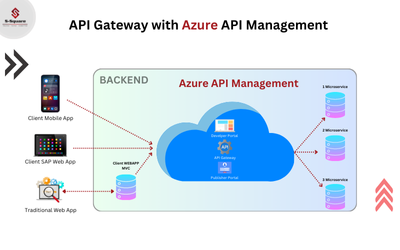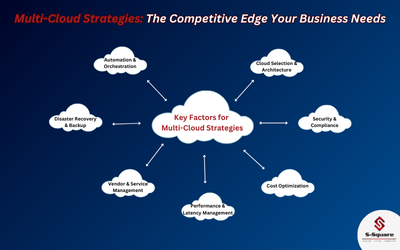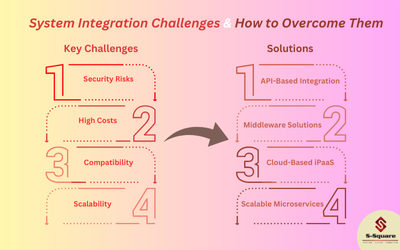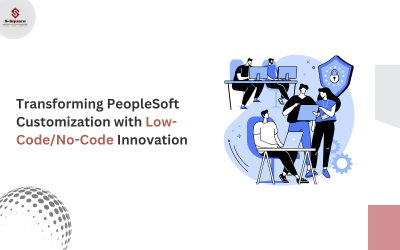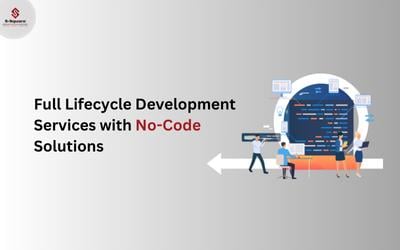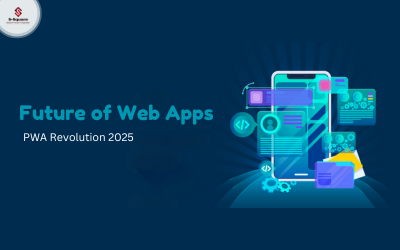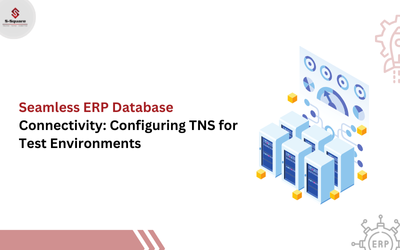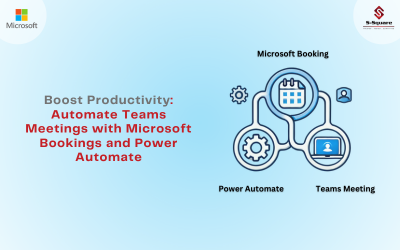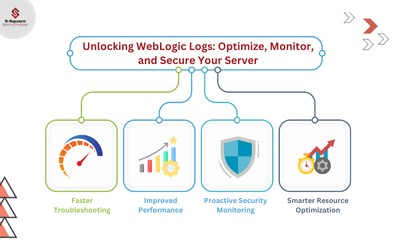The intersection of technology and healthcare is transforming the industry, influencing sectors like labs, dental care, home healthcare, mental health, medical practices, and hospitals.
Recently, generative AI and large language models (LLMs) have gained attention for their transformative potential. Although the healthcare sector has been incorporating AI tools for several years, the recent surge in AI capabilities is poised to bring about significant advancements. Some noteworthy applications include predictive modeling for anticipating treatment outcomes, AI-powered image processing for swift medical image interpretation, and natural language processing for converting unstructured text data into easily understandable formats (For a comprehensive list of current AI applications in the healthcare industry, one can explore the National Library of Medicine link here).
As AI continues its rapid evolution, the healthcare industry anticipates further disruptions. This blog delves into the broad technology landscape of healthcare, shedding light on the solutions that will make the most substantial impact in 2024 and beyond.
1. Low code/No code (LCNC) in healthcare.
Low-code/No-code technology, also known as LCNC, is a visual approach to software development that empowers citizen developers without extensive coding experience. This technology, marked by drag-and-drop features and visual modeling, is becoming indispensable for modern, data-driven organizations globally. Recent projections suggest that the Low Code No Code (LCNC) development platform industry will reach approximately $187 billion by 2030, with a CAGR of 31.1%. This surge underscores its adoption across sectors, including healthcare.
Low Code/ No Code (LCNC) in healthcare addresses evolving patient challenges by providing agile, scalable solutions such as streamlining clinical testing processes, automating documentation etc. The platforms also aid in rapid application testing, facilitating quicker delivery of enterprise applications with reduced development cycles. Additionally, Low Code No Code (LCNC) tools optimize administrative and supply chain processes by incorporating Artificial Intelligence and Machine Learning for activities such as resource allocation, drug distribution, and regulatory compliance.
Furthermore, Scheduling systems, crucial in healthcare coordination, benefit from Low Code No Code (LCNC) development. LCNC enhances scheduling systems by creating automated patient portals. These portals enhance data communication, consolidate appointment information, and improve overall patient experiences.
In 2024, Low Code/No Code (LCNC) in healthcare is set to transform the industry, making it easy and affordable to create advanced applications for both administrative tasks and improving patient experiences.
2.Robotics Process Automation (RPA)
In 2024, RPA technology, or Robotic Process Automation in Healthcare, is expected to make significant strides. This technology involves using software to automate tasks that were traditionally performed by humans. RPA in healthcare is proving particularly beneficial in automating repetitive processes and administrative tasks.
For instance, in patient onboarding, medical billing, and claims processing tasks, RPA is enhancing efficiency, reducing costs, and ultimately improving the patient experience. This technology mimics human actions by deploying scripts that can autonomously perform various tasks and transactions across different software systems.
In addition to administrative tasks, RPA in healthcare has applications in clinical testing, application testing, digital administrative systems, and supply chain management. In relation to patient experience, RPA can manage and schedule patient appointments, automate billing and claims processing, enhance records management, and execute infection control protocols efficiently.
In 2024, the healthcare industry is expected to witness a greater integration of RPA with AI thereby creating Intelligent Automation (IA) systems. This will allow bots to comprehend unstructured data, make informed decisions, and understand natural language by resembling human cognitive processes. Practically, this means that RPA bots, now smarter with AI, can handle not only routine tasks more efficiently but also contribute more effectively to complex processes like diagnosis and decision support.
3.Healthcare IT Platforms
The future of healthcare is changing, focusing more on individual health than just treating medical issues. Digital technology is connecting everyone involved in healthcare, giving patients a real-time view of their genetic makeup, electronic health records (EHRs), and wearable device data. This holistic approach helps identify and manage health issues more effectively.
As healthcare moves toward a value-based care model, Healthcare IT platforms like Oracle Health have become essential tools, changing how care teams collaborate. These platforms serve as central hubs, making it easier to share information and provide comprehensive solutions. Collaboration and innovation in healthcare are now closely tied to these platforms, allowing for continuous testing and leveraging innovation capabilities.
In 2024 and beyond, adaptable healthcare solutions are predicted to gain popularity, and Healthcare IT platforms (such as Oracle Health) offer operational frameworks to these products by providing built-in testing capabilities for rapid creation. They will empower healthcare providers to simulate and test new solutions rapidly, ensuring quick error correction and risk mitigation. This approach will enhance healthcare providers to better design their offerings by aligning themselves closely with the changing patient dynamics, Simplifying processes, and growing awareness around fitness & well-being (physical as well as mental).
4.Artificial Intelligence (AI) in Diagnostics
Medical diagnostics is a systematic process involving the evaluation of medical issues through the examination of symptoms, medical history, and test results. The primary objective is to precisely diagnose a medical condition and determine the appropriate treatment. Diagnostic methods encompass various imaging techniques such as X-rays, MRIs, CT scans, along with blood tests and biopsies. The obtained results play a crucial role in helping healthcare providers select optimal treatment approaches, monitor conditions, and identify disorders at an early stage. Leveraging multimodal patient data diversity, which integrates findings from different sources, especially AI, has the potential to enhance diagnostic outcomes in the future. Furthermore, the use of AI-powered Clinical Decision Support Systems (CDSSs) can also contribute to making real-time decisions in patient care.
Looking ahead to 2024 and beyond, significant advancements are anticipated, including Quantum AI (QAI) expediting diagnostic models through quantum computers. General AI (GAI) applications like DeepQA and Watson also have the potential to revolutionize medical diagnostics by analyzing extensive medical data, leading to improved outcomes. However, challenges persist, such as data fragmentation and the crucial need for interoperability standards. Lastly, the role of AI in developing personalized treatment plans based on patient history and genetics is expected to undergo further evolution in 2024.
5.Telehealth and Remote Patient Monitoring
The pandemic has propelled us to reimagine healthcare services, questioning why the convenience we experience in online activities, like ordering a pizza, isn’t extended to healthcare consultations. This has given rise to the prominence of Telehealth and Remote Patient Monitoring (RPM) in the healthcare sector. Telehealth and RPM utilizes advanced information technology to monitor and transmit diverse health data from patients to healthcare providers, fostering cost-effective improvements in the quality of life and reducing hospitalization rates.
The future of Telehealth and Remote Patient Monitoring (RPM) appears bright, with the global RPM market expected to reach $175.2 billion in 2027 a significant increase from $53.6 billion in 2022. In the upcoming years, the widespread use of healthcare devices and patients’ increasing willingness to record and share information will further propel RPM’s advancement. Furthermore, the near future holds the promise of leveraging data analysis, AI, and machine learning to automate routine medical tasks, allowing our frontline healthcare professionals to allocate their valuable time where it is most needed.
6.Blockchain for Healthcare data security
According to a Gartner survey, IT security is one of the most important software investments for healthcare organizations in 2024. The trend is obvious as current EHR systems often use a centralized server model, posing security and privacy concerns. With the growing importance of healthcare data, there is a risk of personal information being collected without user consent. To address these issues, blockchain for healthcare data security is gaining traction in the industry circles as an immutable, transparent, and decentralized distributed database.
Blockchain for healthcare systems leverages a peer-to-peer network, ensuring data transparency, security, and trust among distributed nodes. The decentralized nature of blockchain mitigates the single point of failure associated with centralized models. The technology also facilitates data audit and accountability through tamper-resistant historical records in the ledger. This allows users to protect their identities through pseudo-anonymity. Plus, smart contracts enhance functionality by allowing users to preset terms for data execution, providing control to data owners.
In 2024, we expect healthcare providers to increasingly adopt blockchain technology for securing healthcare data.
7.Augmented Reality (AR) and Virtual Reality (VR) in Healthcare
In our 21st-century physical reality, augmented reality (AR) and virtual reality (VR) have seamlessly integrated into our daily lives, powered by technological advances and artificial intelligence. While AR overlays information onto the real world, VR immerses users in alternate realities. Initially embraced by the gaming industry, these technologies have found applications in diverse sectors, including healthcare.
AR and VR in Healthcare applications are in medical training, robotic surgery, physical therapy, and post-traumatic stress treatment. In patient education, surgeons use AR to explain procedures and create 3D representations for surgical planning. Vein visualization AR apps, like AccuVein, aid medical professionals in locating veins more efficiently.
The medical industry’s use of AR technologies, such as Microsoft Hololens and Google Glass, has surpassed expectations. AR can also play an important role in surgeries, enhancing precision and reducing complications. For patients with a fear of needles, AR provides vein visualization, ensuring accurate injections. The future of AR in healthcare promises more applications that will enhance the lives of seniors and those with health conditions.
On the other hand, VR is deeply involved in surgeries and medical treatments. In robotic surgeries, surgeons utilize VR to control robots, exploring specific areas in the patient’s body from different angles. VR is also instrumental in treating mental health conditions like PTSD, offering immersive experiences to facilitate healing. In physical therapy, VR provides distractions for patients, increasing their pain threshold and making therapy more bearable.
In 2024 and beyond, AR and VR in Healthcare are expected to evolve further, especially in areas such as supporting patient education, surgical planning, and therapeutic interventions.
S-Square: Your trusted Healthcare IT partner
With over two decades of experience, S-Square is dedicated to helping healthcare companies achieve their IT goals. We specialize in providing tailored solutions in Digital Healthcare, including Patient Care Systems and Hospital Management Systems, to enhance operational efficiency. Our expertise extends to Cloud Services where we guide healthcare organizations through Cloud Strategy and Advisory, Migration, and Modernization etc. We are also adept in Advanced Data & Analytics, providing services in Enterprise Data Strategy and Business Intelligence to derive meaningful insights.
Furthermore, our Digital Transformation & Advisory services focus on creating a roadmap for healthcare organizations, offering guidance in areas like RPA, AI, ML, and application development.
Read a success story where we helped create a federal healthcare portal for veterans.
To know more about our healthcare sector offerings, please explore the page here





